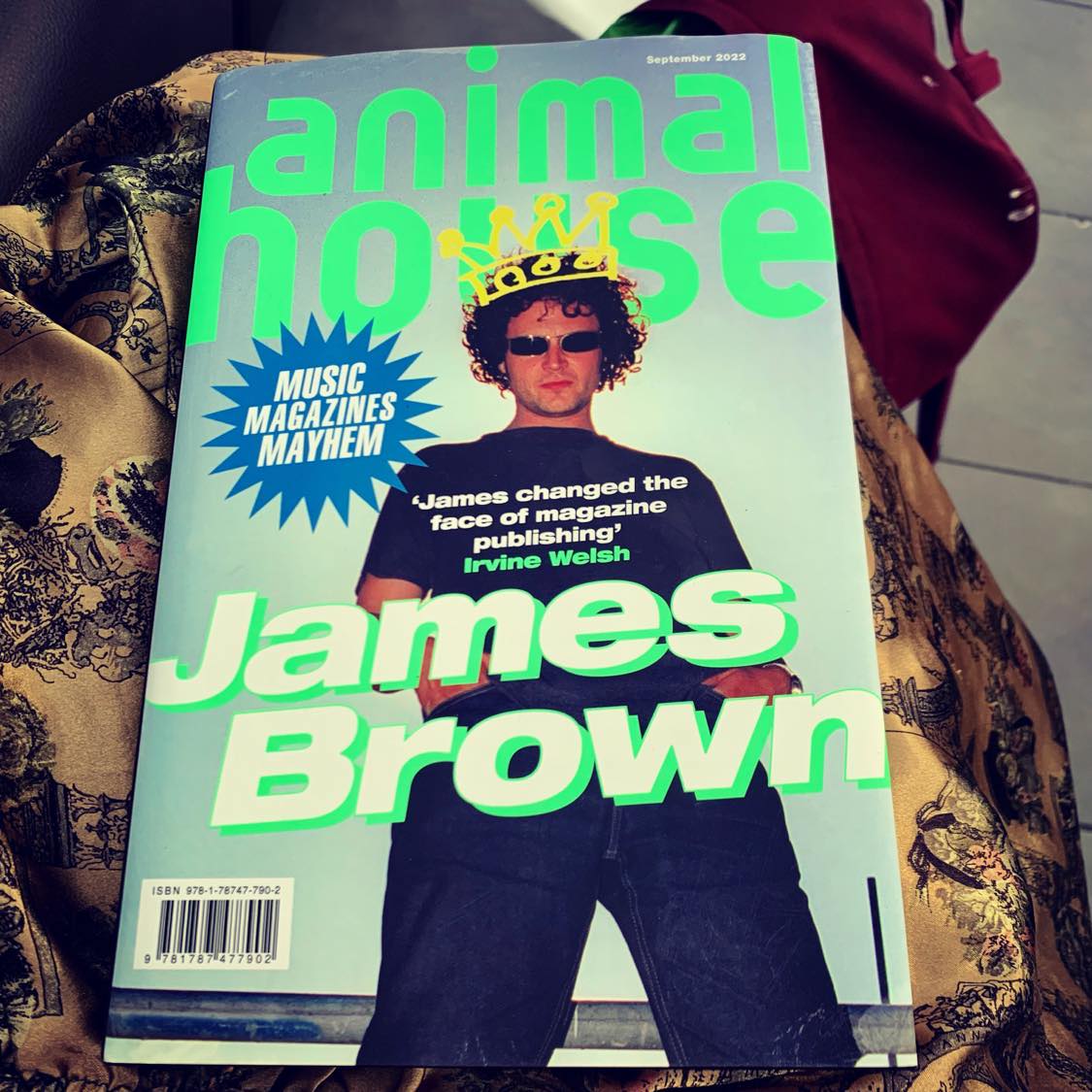I decided I wanted to read Animal House, after stumbling upon an extract from the book in The Guardian.
The headline quote read:
“We took acid at 6pm – the awards started at 6:30.”
Easily lured in by tales of chaos and decadence, I was compelled to read more.
The book is an autobiographical work by former Loaded editor, James Brown, detailing his time at the publication, and his early life. I was about to look at ordering a copy, when I saw that he was going to be doing a book signing and interview at my favourite haunt, Outlaws Yacht Club.
Before going to the event, I knew very little about the author, or about Loaded. In fact, what I thought I knew was a huge misconception.
My knowledge of Loaded was that it was a pioneer of ‘lad culture’, and I imagined it was mainly soft porn (something I have no objection to at all), and contained little that was actually worth reading. My main motivation for wanting to read about its editor’s exploits was my intrigue at any his adventures. What I found out, though, through listening to him speak, and reading his book, was that Loaded actually sounded like something I probably would have enjoyed reading.
It makes sense. I knew already that, for example, being published in Playboy was something that serious writers aspired to in days gone by, because it included serious literary and journalistic content. I suppose the juxtaposition of the two kinds of content might get your work out there to a greater readership than just publishing in, say, the The New Yorker. It’s a trade off that is simply the result of human nature. Like how if you want to promote something serious you’ve done, share it with a selfie and you get more likes. It doesn’t really bother me, and I don’t think it’s sexism, because I think this is something that applies to all genders. In fact, an interesting conversation happened after the book signing; a friend commented on something that I have always wondered about myself – why do magazines aimed at men generally have women on the cover, but womens’ magazines also have women on the cover? As society changes, is this something that will change? That is, of course, if publications like this continue.
Before editing Loaded, Brown worked at the NME and Sounds, and in his teens painstakingly produced his own zines covering the music scene of the late 1970s and early 80s, and Loaded, as it turns out, was about far more than scantily-clad women. In fact, 26 of the 36 issues published under his editorship featured men on the cover.
Brown cites Hunter S. Thompson as one of his heroes, and the content of Loaded was a mixture of gonzo-style journalism and brilliant absurdity, reflecting the mad antics of its editorial team. At the time of its conception, the idea of a mens’ lifestyle magazine was panned by most of the industry, and its huge sales were not anticipated. It had captured what was for many people the zeitgeist of the era.
A lot of the book covers Brown’s pre-Loaded days. He grew up in Leeds (he went to school with my mate’s dad, and with my pal John Paynter of Paisley Dark Records), and it was a nice thing to read about places familiar to me in his recollections. Of all of it, the parts that spoke to me the most, were his accounts of creating zines in his late teenage years. Often, with biography, I like the early part best, because you feel the buzz of someone’s passion and drive to do something for the sake of nothing but itself.
His words are poignant, too. He speaks frankly about his mother’s mental illness and his own struggles with addiction. I suppose, if you wanted to, you could read it as a cautionary tale about burning out. Brown was editor of one of the biggest-selling magazines in the UK before he was 30. Most of his staff were older than him. His trajectory was fuelled by his passion and drive, but also by huge amounts of booze and cocaine, and a never-stopping, ‘don’t look down’ way of life, a place where there is little space for reflection. You can only maintain that for so long I guess.




